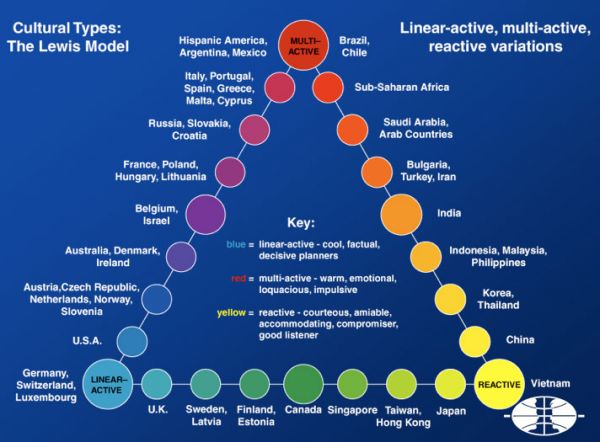 Richard Lewis
Richard Lewis,
a British linguist, is a consultant who helps businesses communicate
and promote their services in foreign environments. To help understand
the differences between cultures, he created this model. National
cultures tend to be either linear-active, multi-active or reactive. What
does this mean?
Lewis explains:
Linear-actives
— those who plan, schedule, organize, pursue action chains, do one
thing at a time. Germans and Swiss are in this group.
Multi-actives
— those lively, loquacious peoples who do many things at once, planning
their priorities not according to a time schedule, but according to the
relative thrill or importance that each appointment brings with it.
Italians, Latin Americans and Arabs are members of this group.
Reactives
— those cultures that prioritize courtesy and respect, listening
quietly and calmly to their interlocutors and reacting carefully to the
other side's proposals. Chinese, Japanese and Finns are in this group.
I'm
inclined to agree with his placement of the dominant culture within the
United States. It's linear, but tends toward a bit of multi-activity.
We're essentially a commercial republic. Or maybe that's just how I'd
like to see my own culture.
 Richard Lewis,
a British linguist, is a consultant who helps businesses communicate
and promote their services in foreign environments. To help understand
the differences between cultures, he created this model. National
cultures tend to be either linear-active, multi-active or reactive. What
does this mean? Lewis explains:
Richard Lewis,
a British linguist, is a consultant who helps businesses communicate
and promote their services in foreign environments. To help understand
the differences between cultures, he created this model. National
cultures tend to be either linear-active, multi-active or reactive. What
does this mean? Lewis explains:
No comments:
Post a Comment